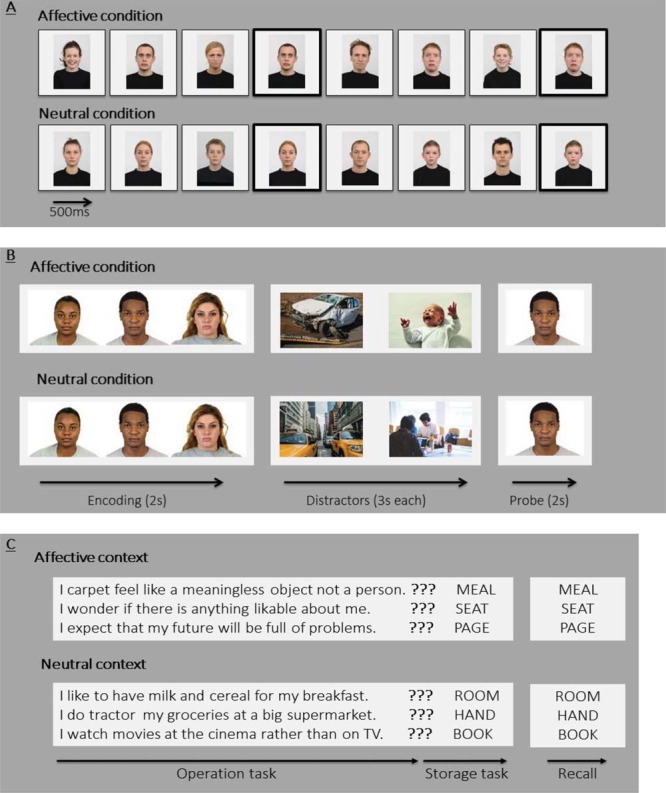Figure 1.

Schematics of three prototypical WM tasks, presented in affective and neutral contexts. The figure depicts three prototypical WM tasks capturing the range of paradigms included in the present meta-analyses. 1A shows an n-back task (where in this case n = 2) that requires participants to continuously update the content of their active WM representations. In the figure, trials with a bold black border indicate target trials. In the affective context the images that have to be matched across trials are negative in valence and in the neutral context the target stimuli are neutral. 1B depicts an example of a delayed-match-to-sample task. In this task, participants are required to match the emotional expression of a probe face with the expression in one of three presented memoranda. During the retention interval participants see either two negative distractor images (affective context) or two valence-neutral images (neutral context). 1C provides an illustration of a complex span task, which comprises an operation component and a storage component. The example depicts an affective reading span task where participants make judgments about the semantic accuracy of self-statements. In the affective context the first sentence requires a “no” response as it is semantically meaningless, while the other sentences are semantically correct. In the neutral context the second sentence is incorrect and the others are semantically meaningful. For the storage component participants have to recall the words in upper case that are presented at the end of each sentence. The recall happens at the end of each block, with block lengths typically varying between three and seven trials.
